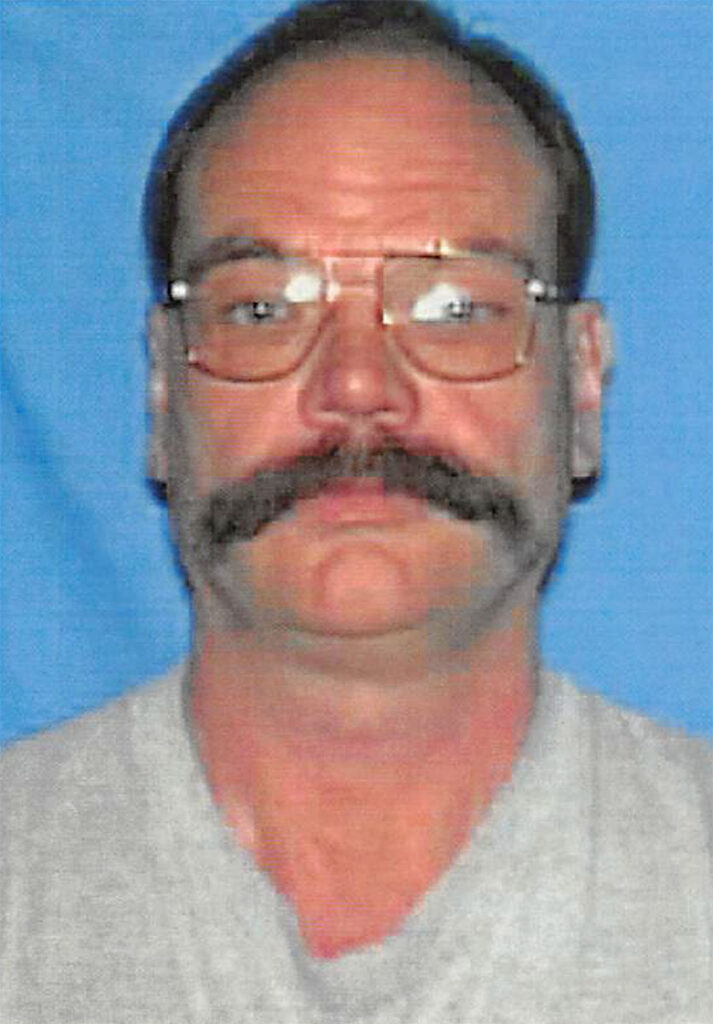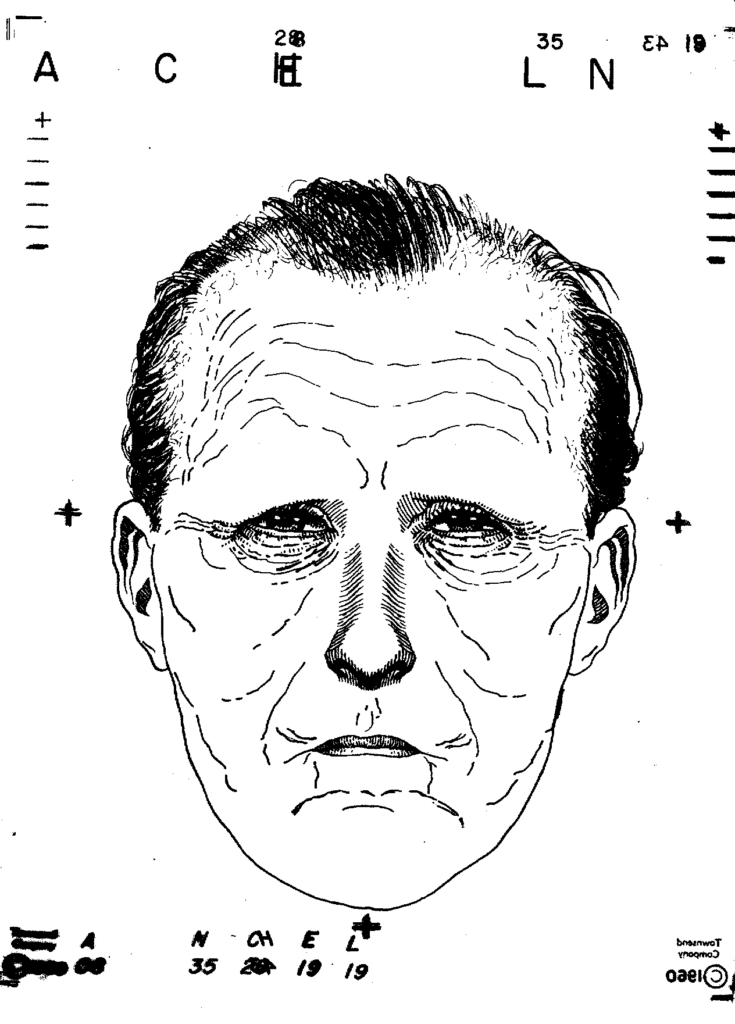Serial killer Ted Bundy spent most of the summer of 1975 in Utah. That same July, a young woman named Nancy Baird disappeared from the gas station where she worked in the town of East Layton, Utah.
Baird was never located. For nearly five decades, speculation has swirled that Bundy abducted and killed her.

It made sense to investigators, at least on the surface. Theodore “Ted” Bundy later admitted to abducting and killing multiple women and girls in Utah. His first arrest came in August of 1975, just six weeks after Nancy Baird disappeared, 30 miles south of where Baird had last been seen.
But no direct evidence has ever emerged to definitively tie Bundy to Baird.
The informant William Babbel
Nancy Baird’s name came to my attention during research of the Sheree Warren case for COLD season 3. Although Sheree disappeared in 1985, a full 10 years after Nancy, their stories bore some striking similarities. They were roughly the same age at the time of their respective disappearances (25 for Sheree, 23 for Nancy). Both were recently divorced from or in the process of divorcing their husbands. Both were primary caretakers for their young sons. And both were last seen at their workplaces.
What most piqued my curiosity about Nancy Baird though, were the claims of an FBI informant named William Babbel.

The Sheree Warren case files show Babbel began communicating with an FBI special agent in February of 1989, just a couple of weeks after Florida executed Ted Bundy. Babbel told the agent he was incarcerated with Warren’s former boyfriend, Cary Hartmann.
Special agent Gregory Hall referred to Babbel only as “source” or by the pseudonym SU 1815-C in his reports. Hall wrote Babbel “was able to provide this writer with information regarding [Sheree Warren] for only a brief period of time.”
Most of Babbel’s information had to do with Hartmann, who was at that time serving a sentence of 15-years-to-life in prison for an aggravated sexual assault that’d occurred in Ogden, Utah a few years prior. Babbel reportedly said Hartmann had been “openly talking about [Warren’s] disappearance.”
Cary Hartmann and Ted Bundy
William Babbel also told the FBI Cary Hartmann had followed news coverage of Ted Bundy’s execution.
Days before Florida put Bundy to death, a detective from the Salt Lake County Sheriff’s Office interviewed the serial killer. Bundy told the detective he’d killed five people in Utah. The detective wanted to know if Nancy Baird was one of them.
Speculation about Bundy’s possible involvement in Baird’s disappearance was featured in TV and newspaper stories at the time.
The FBI reports show Babbel told the agent “Hartmann questioned why Ted Bundy was blamed for the disappearance of Nancy Baird.” Babbel reportedly said “on one occasion, Hartmann was looking at a newspaper article depicting Ted Bundy along with photos of many of his victims. Hartmann placed a X by the photos of five of Bundy’s alleged victims.”
Special Agent Gregory Hall later added Babbel “learned that Cary Hartmann was an acquaintance of Nancy Baird. Baird’s disappearance allegedly occurred while Hartmann was experiencing a divorce.”
Hartmann had been between his two marriages during the summer of 1975. So Babbel’s information had an appearance of credibility. But the FBI later stopped using Babbel as an informant, determining he was unreliable. Babbel also attempted to inform, less than credibly, in the disappearance of Joyce Yost.
The FBI reports do not say whether anyone ever looked into Babbel’s claim of a link between Cary Hartmann and Nancy Baird.
The Nancy Baird case file
COLD submitted a public records request to the Davis County Sheriff’s Office seeking copies of the Nancy Baird case files in January of 2022. The goal, in part, was to determine whether investigators in the Nancy Baird case had ever been informed of the William Babbel information.
The sheriff’s office denied the request, saying the Baird case remained open. Releasing the case file, they argued, could hamper the ongoing investigation.
COLD filed an appeal, arguing while the case was technically open, it had not been active for quite some time. In fact, the investigation had been all but abandoned after Ted Bundy was identified as a suspect.
Davis County agreed to release a partial and redacted copy of the Nancy Baird case file in May of 2022. Cary Hartmann’s name didn’t appear in those records. Neither did Ted Bundy’s. The story, it would turn out, was much more complicated.
Identi-kit
The Nancy Baird case files obtained by COLD cover only the first days and weeks of the investigation. They detailed how, on July 4, 1975, Nancy had gone to work at the Fina gas station near the intersection of Cherry Lane and Highway 89 in the town of East Layton.

At about 5:10 p.m., two children arrived at the station with their father, Denzle Williams. The children, David and Jana Williams, briefly interacted with Nancy inside the Fina station’s convenience store. They became the last people known to have seen Nancy Baird.
The following day, a Davis County detective interviewed David and Jana Williams. They told the detective they’d seen two men in the Fina store, talking to Nancy Baird minutes before she disappeared. The young siblings provided physical descriptions of the men they’d seen.
Those descriptions allowed the detective to use a tool called Identi-kit to build composite images of the two men. Police labeled the men “subject #1” and “subject #2” and described them as “hippie type” individuals.
Subject #1 was skinny, had shoulder-length hair, a beard and mustache and wore a denim jacket with frayed edges.

Subject #2 also had a beard and mustache, but his hair came only to the bottom of his ears. He’d been dressed in a yellow long-sleeve shirt.

Denzle Williams also told the detective about a third man he’d seen outside the Fina station while his kids, David and Jana, were inside the convenience store interacting with Nancy Baird. The third man was about 55 to 60 years old, very thin and had prominent veins on his arms.

Denzle Williams reportedly told the detective he did not see the older man go into the convenience store. It is unknown whether the older man ever interacted with Nancy Baird.
Tom in a yellow Volkswagen
The Nancy Baird case files show detectives compared the composite images to photos from an album that belonged to Baird. They believed one of the photos showed “a very similar likeness of one of the Identi-kit composites.” Investigators identified the man in Baird’s photo album, but that man provided an alibi.
As a result, it’s not clear whether the two “hippie type” men seen by David and Jana Williams in the Fina station with Nancy Baird minutes before she disappeared were ever definitively identified. Neither of those men shared a resemblance with serial killer Ted Bundy.
The Nancy Baird case files also include an account from one of Baird’s friends, a woman named Deloris Drake. She told a detective that on the night of July 2, 1975, she’d visited a few bars along Ogden’s Washington Boulevard with Nancy Baird. Those included Rigos, a restaurant and bar, and the Iron Horse.

Drake told investigators Nancy Baird had dropped her off at home around 2:30 a.m. on the morning of July 3, 1975. Baird then departed for her own home in Layton.
About 30 minutes later, Baird returned to Drake’s home on 36th Street in Ogden. Davis County Sheriff’s Lt. Dean Egbert wrote in a report Baird “appeared to be quite shaken and frightened” because a man named Tom in a yellow van had followed her home.
This man, Tom, had allegedly pursued Nancy Baird to her friend Deloris Drake’s home and was making a threatening comment toward Baird as Drake opened her door. Drake told investigators she’d seen a second man with “Tom,” on a motorcycle.
The case files do not include any further mention of these two men, or suggest investigators at the time in 1975 made any further effort to identify, contact or interview them in regard to Nancy Baird’s disappearance.
Hear why Ted Bundy may also have an alibi in Cold: The Convenient Alternative
Episode credits
Research, writing and hosting: Dave Cawley
Audio production: Aaron Mason
Audio mixing: Ben Kuebrich
Cold main score composition: Michael Bahnmiller
Additional scoring: Allison Leyton-Brown
KSL executive producer: Sheryl Worsley
Workhouse Media executive producers: Paul Anderson, Nick Panella, Andrew Greenwood
Amazon Music and Wondery team: Morgan Jones, Candace Manriquez Wrenn, Clare Chambers, Lizzie Bassett, Kale Bittner, Alison Ver Meulen
KSL companion story: https://ksltv.com/550243/blamed-on-bundy-cold-podcast-challenges-popular-theory-in-nancy-baird-cold-case/
Episode transcript: https://thecoldpodcast.com/season-3-transcript/ted-bundy-convenient-alternative-full-transcript/











